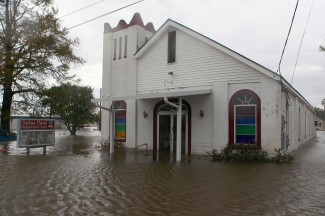


“The Pallbearers Club” diverges from Tremblay’s more frightening work, and while I found myself longing for scarier moments, this delightfully morbid and surprisingly emotional horror novel demonstrates Tremblay’s literary range.ĭanielle Trussoni, who reviews Gothic and horror fiction for The Times, is the author of five books. Art’s obsession with music, and his nostalgic connection to bands from the 1980s - the chapters are named for Hüsker Dü songs - make the novel feel like a horror-inflected version of Nick Hornby’s “High Fidelity.” She introduces him to punk music, pot, vampire legends and graveyards. He sees things that make him question her identity, and his sanity. He feels drained, as if she’s feeding off his energy. When he’s around her, spooky things happen. And in fact, Art never gets a handle on Mercy. Art’s parents assume she’s his girlfriend, but their connection isn’t fully defined. When a mysterious young woman named Mercy Brown joins the group, a life-altering friendship begins. Hoping to beef up his college applications, Art starts an after-school club, the Pallbearers Club, whose three members attend wakes and funerals. Written as a memoir, the story is narrated by 17-year-old Art Barbara, a gangly high school student with severe scoliosis. A jaunty, character-driven exploration of a complicated friendship (that may or may not involve a vampire), it’s more emotional than his previous novels, and more innovative. Paul Tremblay’s latest, THE PALLBEARERS CLUB (Morrow, 288 pp., $27.99), is something of a departure. As he stakes out homes, breaks in, tortures families and films everything, it becomes clear that this gruesome display of violence is a spectacle for our consumption, one in which both performer and consumer are implicated. This utterly chilling novel of home invasion - equal parts confession and demented performance art - plumbs the sick mind of a criminal. Seidlinger’s hair-raising new novel, should come with a warning label on the cover: Do not, under any circumstance, read when you’re alone. Islanders stave off the sluagh as best they can, whispering prayers around bonfires and hiding indoors, but there is no defeating the dark forces of destiny.ĪNYBODY HOME? (Clash Books, 220 pp., paper, $18.95), Michael J. Each October, on an island of “grass and rock and heather” off the Scottish coast, a door opens the “border between this world and the next” grows thin and the sluagh descend to blacken the sky like “great unnatural clouds,” killing animals and people. In Daphne du Maurier’s 1952 story “The Birds,” a Cornish seaside town is bombarded by fleets of kamikaze birds, “blackbird, thrush, the common house sparrow, and … a vast quantity of pigeons and starlings.” Writing in the aftermath of the Second World War, with Germany’s air raids still fresh, du Maurier - a founding genius of modern Gothic horror - conveyed the bewildering terror of a bombing raid.Įmma Seckel’s eerie, melodic debut novel, THE WILD HUNT (Tin House, 351 pp., paper, $16.95), also set in the aftermath of World War II, evokes similar anxieties, only Seckel’s birds are the “sluagh” - airborne “in-between” creatures of Celtic legend. And while the meandering pathways and twisting story lines can at times feel disorienting, this beautifully written modern ghost story is an enchanting place to get lost. The structure of Owen’s novel mimics its setting: There is no straight road through it. The stories could cling in that subtle way that pollen clings, invisible in the throat.” At the edge of Mockbeggar lies Small Angels, an abandoned private chapel “used to strange goings-on.” After years of decay, Small Angels has been rented for a local wedding, inciting long-dormant spirits. It was well known that a story told there - even a game of imagination played beneath its shifting, leafy shadows - might stick like a burr. “In the village they were used to Mockbeggar and its ways.

Lauren Owen’s moody second novel, SMALL ANGELS (Random House, 386 pp., $28.99), has a perfect Gothic setting: Mockbeggar Woods, a place as brooding and ominous as the Brontës’ moors. In a Gothic novel, dark histories linger in gloomy castles, musty antiquarian bookshops, crumbling graveyards and dusty attics, just waiting to attach themselves to the living. One of the great pleasures of Gothic fiction lies in its insistence that the past (to quote Faulkner) isn’t dead, it isn’t even past.


 0 kommentar(er)
0 kommentar(er)
